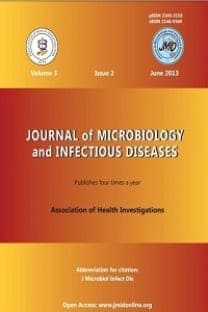A rare cause of soft tissue infections: Pseudallescheria boydii
___
Jayamohan Y, Ribes JA. Pseudallescheriasis: a summary ofpatients from 1980-2003 in a tertiary care center. Arch Pathol Lab Med. 2006;130:1843-1846.
Troke P, Aguirrebengoa K, Arteaga C, et al. Treatment of scedosporiosis with voriconazole: clinical experience with 107
patients. Antimicrob Agents Chemother 2008;52:1743.
Turin L, Riva F, Galbiati G, Cainelli T. Fast, simple and highly
sensitive double-rounded polymerase chain reaction assay to detect medically relevant fungi in dermatological specimens.Eur J Clin Invest. 2000;30:511-518.
Hall TA. BioEdit: a user-friendly biological sequence alignment
editor and analysis program for Windows 95/98 NT. Nucl Acids
Symp Ser. 1999;41:95-98.
Cardoso JC, Serra D, Cardoso R, et al. Cutaneous Pseudallescheria
boydii infection in a renal transplant patient: A case report. Dermatol Online J 2009;15:8.
Gottesman-Yekutieli T, Shwartz O, Edelman A, et al. Pseudallescheria boydii infection of a prosthetic hip joint-an uncommon infection in a rare location. Am J Med Sci 2011;342:250-
-
Chaveiro MA, Vieira R, Cardoso J, Afonso A. Cutaneous infection due to Scedosporium apiospermium in an immunosuppressed
patient. J Euro Acad Dermatol Venereol 2003;17:47-49.
Zeng J, Kamei K, Zheng Y, Nishimura K. Susceptibility of P.
boydii and Scedosporium apiospermum to new antifungal agents. Jpn J Med Mycol 2004;45:101-104.
Campagnaro EL, Woodside KJ, Early MG, et al. Disseminated
Pseudallescheria boydii (Scedosporium apiospermum)infection in a renal transplant patient. Transpl Infect Dis 2002;4:207-211.
- ISSN: 2146-3158
- Yayın Aralığı: 4
- Başlangıç: 2011
- Yayıncı: Sağlık Araştırmaları Derneği
Aynur Atilla, Emel Duyar, Fatih Bostancı, S. Sırrı Kılıç
Generalized Pruritus Secondary to Acute Hepatitis A: A Case Report
The relationship between Helicobacter pylori and DNA hypermethylation in gastric cancer
Gülnur Tarhan, Hülya Şimşek, Salih Cesur, İsmail Ceyhan
Retropharyngeal cellulitis complicated by cervical spondylodiscitis: A case report
Gülşen İskender, Cihat Oğan, Bilgin Arıbaş, Emre Tekgündüz
Use of hematological parameters in evaluation of treatment efficacy in cutaneous leishmaniasis
Effect of chlorhexidine on oral airway biofilm formation of Staphylococcus epidermidis
Ünase Büyükkoçak, Canan Ağalar, Turgut Deniz, Sabahat Çeken, Fatih Ağalar
A rare cause of soft tissue infections: Pseudallescheria boydii
Meltem Taşbakan, Uğur Önal, Dilek Metin, Hüsnü Pullukçu, Tansu Yamazhan, Aygül Çeltik, Süleyha Hilmioğlu-Polat, Mehmet Argın, Sercan Ulusoy
Brucellosis with cervical vertebrae and pulmonary involvement: A rare case
Gül Karagöz, Ayten Kadanalı, Behiye Dede, Şenol Çomoğlu, Nur Betül Özdemir, Mehmet Önen
Brucellosis in Kosovo and Clinical Features of Brucellosis at University clinical center of Kosovo
Emine Buçaj, Edmond Puca, Sadie Namani, Muharem Bajrami, Valbon Krasniqi, Lindita Berisha, Xhevat Jakupi, Bahrie Halili, Dhimiter Kraja
